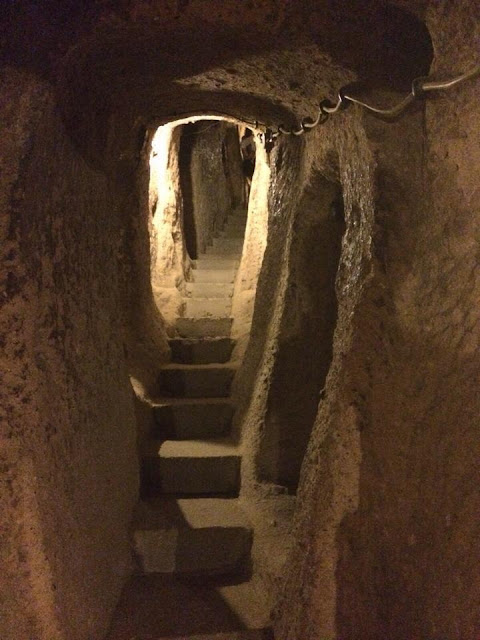The original populations of Cappadocia, which included the Hittites, also became Greek-speaking over time.
It is known that the region of Cappadocia was inhabited in prehistoric times. However, the first underground cities in Turkey were mentioned by Xenophon of Athens:
Their houses were underground, with a mouth like that of a well, but below they spread out widely. Entrance ways were dug for the herd animals, but the people descended by ladder. In the houses there were goats, sheep, cattle, birds, and their children. Inside, all the animals were kept fed on a diet of fodder.
— Xenophon 4.5.25
— Xenophon 4.5.25
One of the Diadochoi (“successors”) of Alexander the Great, Eumenes, became a Satrap (governor of a province) of Cappadocia and established Greek settlements in the region.
Eumenes installed his friends in charge of cities, appointed garrison commanders and organised the administrative and legal system.
There are around 40 cities in total in Cappadocia, with only a few open to the public.
By 1st century AD, most of the Greeks had become Christian.
The few entrances were hidden by rocks or foliage. Inside, intricate passageways were like a labyrinth and difficult to navigate.
Doorways were sealed with large rock doors. In some places, holes in the ceiling enabled the attack of intruders with spears.
The largely unexplored city of Özkonak had about nineteen levels and 60,000 inhabitants.
By the eleventh century, about three thousand churches had been carved in the rocks.
Richard MacGillivray Dawkins, a Cambridge linguist, undertook fieldwork in Cappadocia from 1909 to 1911. He recorded in 1909 that "When the news came of the recent massacres at Adana, a great part of the population at Axo took refuge in these underground chambers, and for some nights did not venture to sleep above ground."
In 1969 the site opened to visitors.




